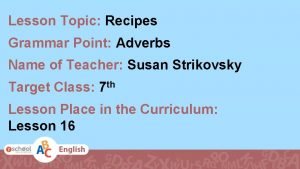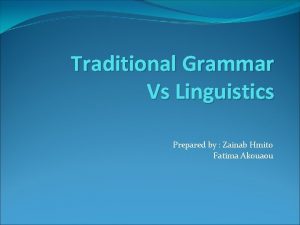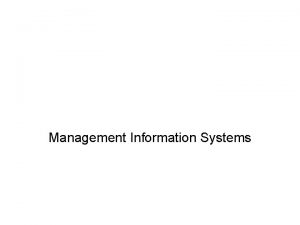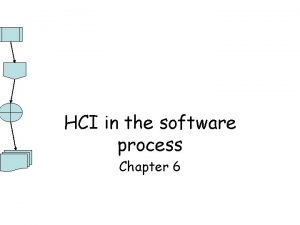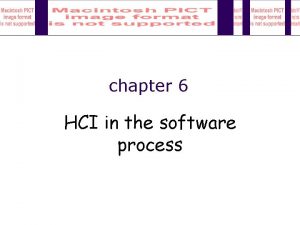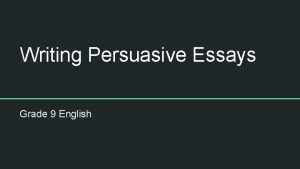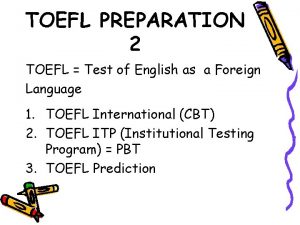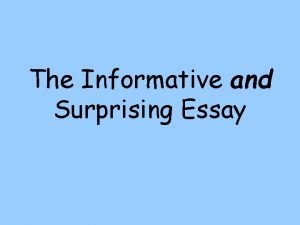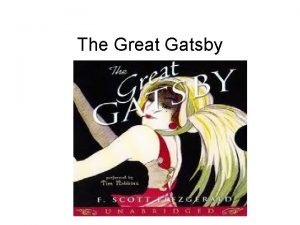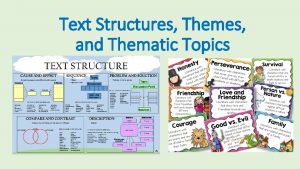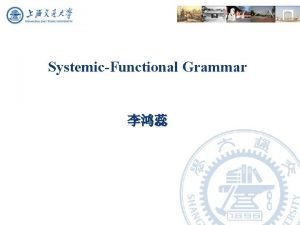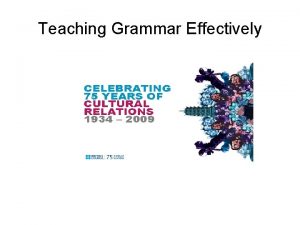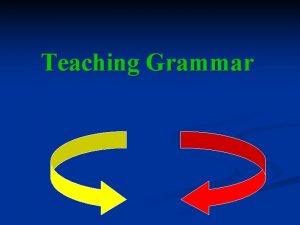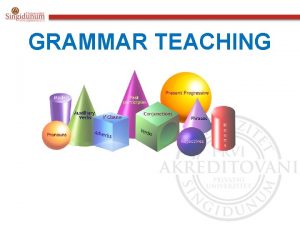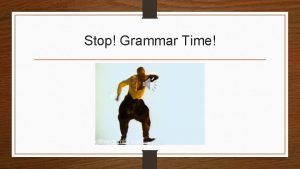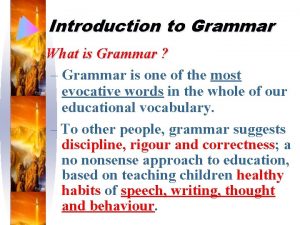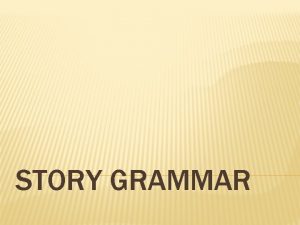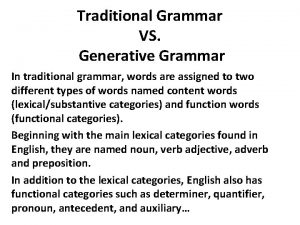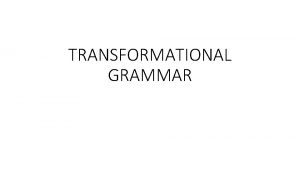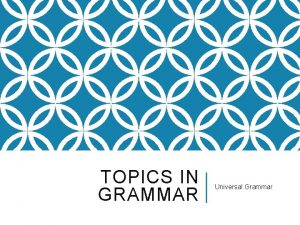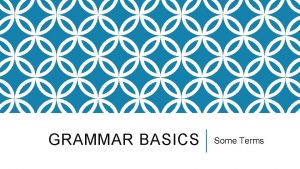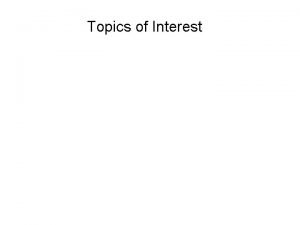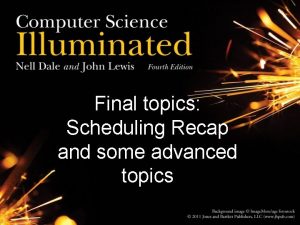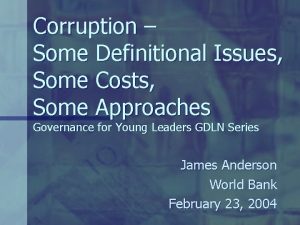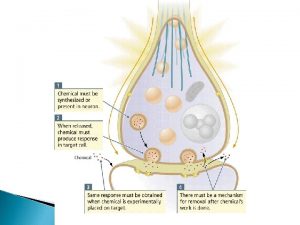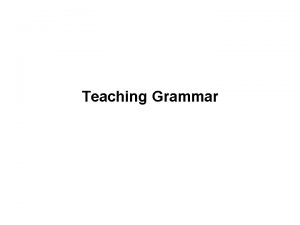TOPICS IN GRAMMAR Systemicfunctional grammar 1 system SOME



























- Slides: 27

TOPICS IN GRAMMAR Systemic-functional grammar 1: system

SOME PROMINENT FIGURES IN FUNCTIONAL GRAMMAR Vilém Mathesius Halliday R. Hasan J. R. Firth M. A. K

BASIC ASSUMPTIONS Langue = meaning potential Meaning potential can be described as a system of choices, eg between active and passive voice. What governs the choices made? The doctor is seeing Lucy now. Lucy’s being seen by the doctor now. Who is more likely to speak these utterances, receptionist or parent?

FACTORS THAT INFLUENCE THE CHOICES MADE… Relationship between speakers Purpose of utterance Context of utterance (discourse) What is important/given/new information…

DESCRIBING A LINGUISTIC SYSTEM… “A system is a list of things between which it is possible to choose. ” -- Margaret Berry (paraphrased) 1. Choose a point in the language where you can make a distinction between elements that are different in meaning e. g. countable vs uncountable nouns

DESCRIBING A LINGUISTIC SYSTEM… “A system is a list of things between which it is possible to choose. ” -- Margaret Berry (paraphrased) 1. Choose a point in the language where you can make a distinction between elements that are different in meaning e. g. countable vs uncountable nouns three crayons vs *three chalks

MEANING + SURFACE STRUCTURE NB Meanings have to correspond to grammatical signals. Concepts like length or danger are not expressed by grammatical features in English; they are in some languages.

SHOWING THE SET OF OPTIONS FOR COUNTABILITY OF NOUNS less delicate more delicate mass Noun singular countable plural

BUILDING A MORE COMPLEX NETWORK (TRANSITIVITY) major clause minor Major clauses have VPs. Minor clauses don’t, eg ‘How about you? ’ ‘OK, then? ’

WHAT KIND OF MAJOR CLAUSE TYPES ARE THERE? We’re building a house. (material) She believes in fairies. (mental) She told me a story. (verbal) He is a fine cook. (relational) She snores. (behavioural) There’s a train at four o’clock. (existential) This is the set of options at clause level in English. Notice the options are based on meaning and form.

DEVELOPING THE TRANSITIVITY SYSTEM material mental major verbal relational behavioural clause existential minor

FOCUSING ON MATERIAL PROCESSES material mental major verbal relational behavioural clause existential minor

MATERIAL PROCESS TYPES Some material processes can have EITHER one or two participants, eg. We crashed the car. The car crashed. ‘Crash’ is therefore an unrestricted material process. Some material processes can have ONLY one OR ONLY two participants, eg: The car hit the wall. (*The car hit. ) I reacted. (*I reacted the car. ) ‘Hit’ and ‘react’ are restricted material processes.

MATERIAL PROCESS TYPES Some material processes have an animate agent and are intentional, eg We’re building a house. These are ‘action’ processes. Some material processes have an inanimate agent and are unintentional, eg. The roof collapsed. These are ‘event’ processes.

UNTYPICAL MATERIAL PROCESS TYPES Some material processes combine an inanimate agent with an action process, e. g. The gun murdered the policeman. These are ‘action’ processes with untypical animacy. Some material processes combine an animate agent with an event process e. g. We collapsed. These are ‘event’ processes with untypical animacy.

SIMULTANEOUS CHOICES unrestricted action material event choices typical untypical = simultaneous

FOCUS ON UNRESTRICTED/RESTRI CTED PROCESSES unrestricted action material event choices typical untypical = simultaneous

TYPES OF UNRESTRICTED MATERIAL PROCESS Unrestricted material processes can have either one or two participants. What is the difference between them? We crashed the car. The car crashed.

TYPES OF UNRESTRICTED MATERIAL PROCESS Unrestricted material processes can have either one or two participants. How do you distinguish between them? We crashed the car. (causative) The car crashed. (non-causative)

TYPES OF RESTRICTED MATERIAL PROCESS Restricted material processes are easy to distinguish – you either expect them to have one OR two participants, eg I reacted. (middle – expect 1 participant) The car hit the wall. (non-middle – expect 2)

TYPES OF RESTRICTED MATERIAL PROCESS Restricted material processes are easy to distinguish – you either expect them to have one or two participants, eg I reacted. (middle – expect 1 participant) The car hit the wall. (non-middle – expect 2) Note that it some non-middle processes can sometimes have 1 participant, ie they are intransitive options for a process that is normally non-middle: ‘The missile hit!’ We assume that it hit something…

ADDING TO THE SYSTEMIC NETWORK… causative unrestricted non-causative material middle restricted transitive non-middle intransitive

FROM THE TRANSITIVITY SYSTEM TO THE VOICE SYSTEM Note that entry to the voice system demands certain selections to be made from the transitivity system. Passive options are available when you choose… Causative unrestricted material processes, eg We crashed the car. > The car was crashed (by us). Untypical middle processes, eg She is walking the dog. > The dog is being walked… Transitive non-middle processes, eg The car hit the wall. > The wall was hit (by the car).

FROM TRANSITIVITY TO VOICE… causative unrestricted non-causative active typical middle passive untypical restricted transitive non-middle intransitive

THE TRANSITIVITY AND VOICE SYSTEMS

AND THE POINT IS? The grammar of transitivity underlies much discourse or text analysis and critical discourse analysis, eg MAK Halliday on William Golding’s The Inheritors, Deirdre Burton on Sylvia Plath’s The Bell Jar …etc. Text analysts look at the distribution of material, mental, verbal, relational clauses, and they analyse instances of agency, typicality, non-typicality, etc. All this analysis depends on having a robust underlying model of the clause.

CLASS ACTIVITIES The class activities review these concepts. They take a little getting used to! In groups, discuss the activities for this week’s session.
 Interrogative adjectives
Interrogative adjectives Adjective and adverb
Adjective and adverb They say it only takes a little faith to move a mountain
They say it only takes a little faith to move a mountain God when you choose to leave mountains unmovable
God when you choose to leave mountains unmovable Cream countable or uncountable
Cream countable or uncountable Contact force
Contact force Some say the world will end in fire some say in ice
Some say the world will end in fire some say in ice Some say the world will end in fire some say in ice
Some say the world will end in fire some say in ice Some may trust in horses
Some may trust in horses Left linear to right linear grammar
Left linear to right linear grammar Traditional grammar in linguistics
Traditional grammar in linguistics Unrestricted grammar example
Unrestricted grammar example Closure properties of regular languages
Closure properties of regular languages Types of information systems
Types of information systems What are the examples of operating system
What are the examples of operating system Simulate or animate some features of intended system
Simulate or animate some features of intended system Formality gap in hci
Formality gap in hci Open system closed system and isolated system
Open system closed system and isolated system Circularory system
Circularory system School magazine examples
School magazine examples Argumentative essay grade 9
Argumentative essay grade 9 Examples of thematic essays
Examples of thematic essays Behavioural training topics
Behavioural training topics Skill 23: anticipate the topics answers
Skill 23: anticipate the topics answers What is competency based interview
What is competency based interview Informative and surprising essay
Informative and surprising essay Dissatisfaction theme in the great gatsby
Dissatisfaction theme in the great gatsby What is a thematic topic
What is a thematic topic

